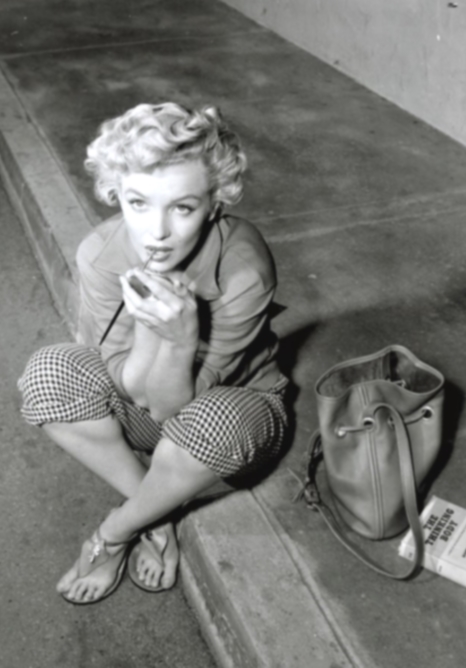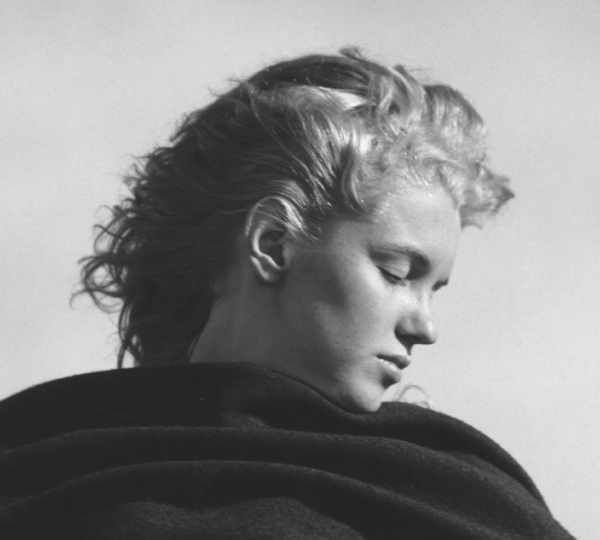A Brief Summary
Before ending this review with a brief summary, I would be remiss if I did not note the following. During a recent interview with Heather McDonald, Mark Shaw asserted that he wrote Collateral Damage because he never bought the idea that Marilyn committed suicide. The author then added: When I heard about it I didn’t believe it and I still don’t and I’ve proven in the new book that it didn’t happen. Shaw proceeded to add: In this particular book I did not use any sources with books or anything else from 1965 on. They [Shaw’s sources] were all before sixty-five. Remarkable, to say the least. Shaw brazenly admitted that he began writing with an occluded mind based on a foregone conclusion. Most certainly, as he wrote, he was afflicted with an idée fixe and a form of group think, leading him to engage in cherry picking, confirmation bias, belief perseverance, illusory correlation and fallacious reasoning.
Why would an author in search of the facts, in search of the truth, deny the validity of all the valuable research into Marilyn’s life and her relationships after 1965, not only with the middle Kennedy brothers, but her other relationships as well? Why would he deny all of the valuable research into the circumstances surrounding her death that has transpired during the past sixty-one years? Why would he limit his source material to only the three years following her tragic death? And finally, why would he evoke discredited men like Frank Capell, Sgt Jack Clemmons and many others, including both C. David Heymann and the incorrigible fabulist, Gianni Russo, who did not appear with his Marilyn fantasy until 2005; and his book was not published until 2019, both dates decades beyond 1965. Using Russo as a source is a contradictory reversal of Shaw’s source edict; and why would Shaw present those men as reliable sources? The answer is obvious: Shaw wanted and needed sources that confirmed his foregone conclusion, not unlike every conspiracist author who has written about Marilyn Monroe’s life and her death.
Even though Shaw called Senator Joe McCarthy a despicable man whose heart was filled with hate, the author himself engaged in a despicable form of McCarthyism because of the apparent hatred in his heart for Robert Kennedy. Referencing the Chappaquiddick tragedy, Shaw asserted that Teddy Kennedy’s conduct, how he handled the drowning of Mary Jo Kopechne was symbolic of the selfish “me first” mentality of the Kennedys, especially RFK (Shaw 558). Robert Kennedy had absolutely no involvement at all with the Kopechne drowning: the attorney general had been assassinated approximately a year prior to Mary Jo’s tragic death. Even so, guilty by familial association in Shaw’s assessment, Robert was even more selfish and uncaring than the youngest Kennedy brother.
Within the text of Collateral Damage, Mark Shaw devoted many words and pages to the exceptional investigative prowess of Dorothy Kilgallen who constantly searched for the facts in every significant story or case, searched for the truth and justice. Based on comments within her published articles, Shaw asserted, Dorothy suspected that her friend did not commit suicide, suspected that her friend was romantically involved with Robert Kennedy and suspected that her friend’s death involved the attorney general. Shaw knew without debate, all the unsolved mysteries surrounding and all the unanswered questions left in the wake of Marilyn’s mysterious death would have been solved and answered after an investigation by the incredible Dorothy Kilgallen. Since Marilyn died in early August of 1962, what prevented Dorothy from focusing her investigative spotlights and powers on her friend’s mysterious death? Of course, sixteen months after Marilyn’s death, Dorothy became embroiled in the president’s assassination, the murder of Oswald and then the sensational trial of Jack Ruby; but she had at least sixteen months during which she could have investigated Marilyn’s suspected murder. Again, what stopped her?
Shaw must have realized that the absence of any investigation by Dorothy Kilgallen was a problem for him; so he proffered an explanation. During the October missile crisis, with humanity on the precipice of nuclear war, possibly annihilation, in perhaps his finest hour, RFK stood tall and helped his brother quell the threat. Dorothy Kilgallen, Shaw presumed, because of her integrity―and the fact that Robert Kennedy had helped save humanity―could not in good conscience go forward, and this stifled any further probe involving RFK (Shaw 600). According to Shaw, then, Dorothy Kilgallen’s integrity actually prevented her from exposing the murderer of her friend, the most famous blonde actress in the world. Truly amazing conjecture based on absolutely nothing. The fact that Dorothy Kilgallen never investigated Marilyn’s death could have been based on this: even then, no actual authentic evidence existed that Robert Kennedy and Marilyn were even romantically involved, much less that he was somehow involved in her death by murder. No evidence at all.
In fact, Dorothy Kilgallen’s columns following Marilyn’s death had been based on rumor and gossip, innuendo and sensationalism advanced by other luminaries in the gossip mongering field, Walter Winchell, Earl Wilson, Louella Parsons and James Bacon. As of right now in America, rumor and gossip and innuendo do not qualify as evidence.
Still, Shaw promised his readers that he would reveal new and compelling evidence regarding Marilyn’s death. He did not: he merely recited, right on cue, what Sarah Churchwell accurately identified as the same tales and bromides.
For example, as evidence that Marilyn was possibly murdered because she knew about the existence of little green men, Shaw resurrected the CIA-UFO-Memo, displayed on the left side of the double panel below. Shaw insinuated that the memorandum was new evidence, when it was, in fact, inordinately old news. Twenty-eight years ago, in 1995, Milo Speriglio introduced the memorandum to the world during a press conference; and since that time, the document has been evaluated and analyzed more times than Carter’s got little liver pills. Nick Redfern just published a book that yet again evaluated that dubious memorandum. Many UFOlogists and impresarios in the odd world of flying silver discs generally agree on this: that document is a hoax, a crafty forgery.


Shaw, however, interjected a new wrinkle: he asserted that the one of the telephone conversations mentioned in the memorandum occurred between Dorothy Kilgallen and Marilyn who told Kilgallen that JFK had told her of his visit to a secret air base where he viewed “things” from outer space (Shaw 386). I have read that memorandum at least two dozen times; and it does not state that Marilyn revealed to Dorothy Kilgallen anything heard from the lips of or otherwise learned from President Kennedy. Clearly, according to the memorandum, Howard Rothberg imparted hearsay evidence to Dorothy involving some secrets Marilyn allegedly knew, one of which involved the president, a secret air base and things from outer space. Still, regardless of what the CIA-UFO-Memo alleged, I repeat, that document is now recognized to be a forgery.
In 2006, fifteen years ago on the CBS program, 48 Hours, Peter Van Sant and Anthony Summers presented and generally discussed an FBI file that Mark Shaw also resurrected. Displayed on the right side of the document panel above, sent from Mexico City and dated the 13th of July in 1962, number 105-40698-3, the file referenced a
luncheon at the Peter Lawfords with President Kennedy just a few days previously. She [Marilyn] was very pleased, as she asked the President a lot of socially significant questions concerning the morality of atomic testing and the future of the youth of America.
According to my research and according to the John F. Kennedy Presidential Library and Museum along with the website, History’s Home on the Web, President Kennedy was either in the nation’s capital, Camp David or Hyannis Port throughout the month of July in 1962, except when he delivered a 4th of July speech at Independence Hall in Philadelphia. Even though, during that CBS program, Anthony Summers presented the now fifty-nine year old FBI document as being factual, twenty-one years earlier, Summers admitted in his pathography, Goddess, that his investigation regarding that alleged meeting revealed no day in the relevant time-frame when John Kennedy could have been in Los Angeles―he made an official visit to Mexico at the end of June (Summers 577). Obviously and evidently, President Kennedy did not travel to California in July of 1962, which leads to an obvious conclusion: President Kennedy did not meet Marilyn at the Lawford’s beach house for a luncheon.
But then, throughout Collateral Damage, Mark Shaw followed along the well-worn path created by the footfall of an almost endless parade of conspiracists who have preceded him. He, like they had, promised his readers he would prove with new and compelling evidence that Marilyn Monroe did not commit suicide; and yet, he merely engaged in not only rumor, opinion, gossip and innuendo, he also engaged in the worst form of gross speculation and evidence creation. While presenting testimony lacking any evidentiary value whatsoever, he also presented testimony from two sources whose verity has been questioned repeatedly and from one source whose testimony has obviously been completely fabricated. Additionally, he otherwise twisted the facts to fit his foregone conclusion: Marilyn Monroe was murdered, not only murdered but murdered by Robert Kennedy.
Oddly, though, Shaw asserted as his text approached its conclusion: it appears that Marilyn Monroe had been right, as noted, when she wrote in My Story, “Yes, there was something special about me, and I knew what it was. I was the kind of girl they found dead in a hall bedroom with an empty bottle of sleeping pills in her hand” (Shaw 600). Did Mark Shaw fail to realize that Marilyn was referring to her death by overdose, her death by suicide?
The fact of the matter is this: the only authentic evidence available clearly supports only one mode of death, which Marilyn attempted four times during her life before finally succeeding. Marilyn Monroe committed suicide; and no amount of sensational speculation or hackneyed theories fitted into a tattered tuxedo can alter that fact. If Mark Shaw really wanted justice for Marilyn, which I seriously doubt, considering his use of Gianni Russo’s outrageously loony and obviously fabricated story, then Shaw would have let her rest in peace; but evidently that would be an empathetic compassion beyond a conspiracist’s comprehension.



